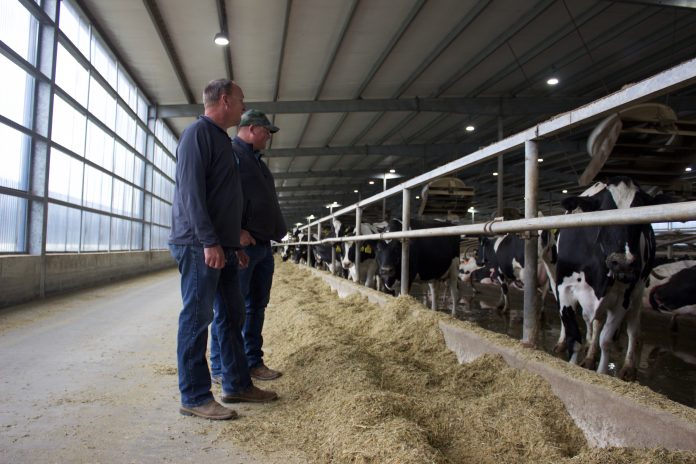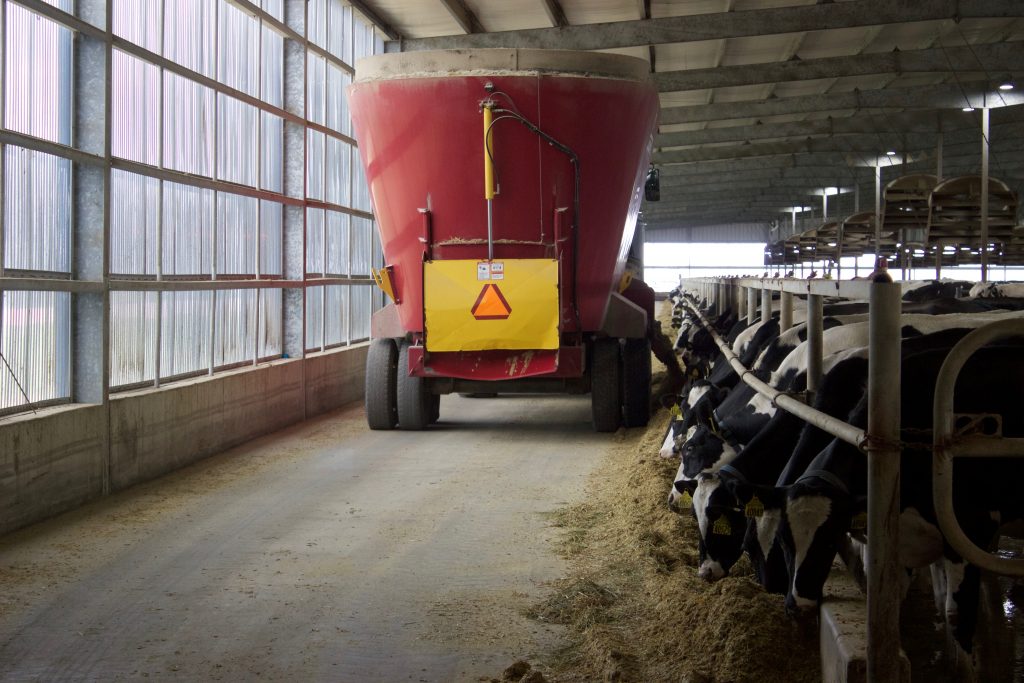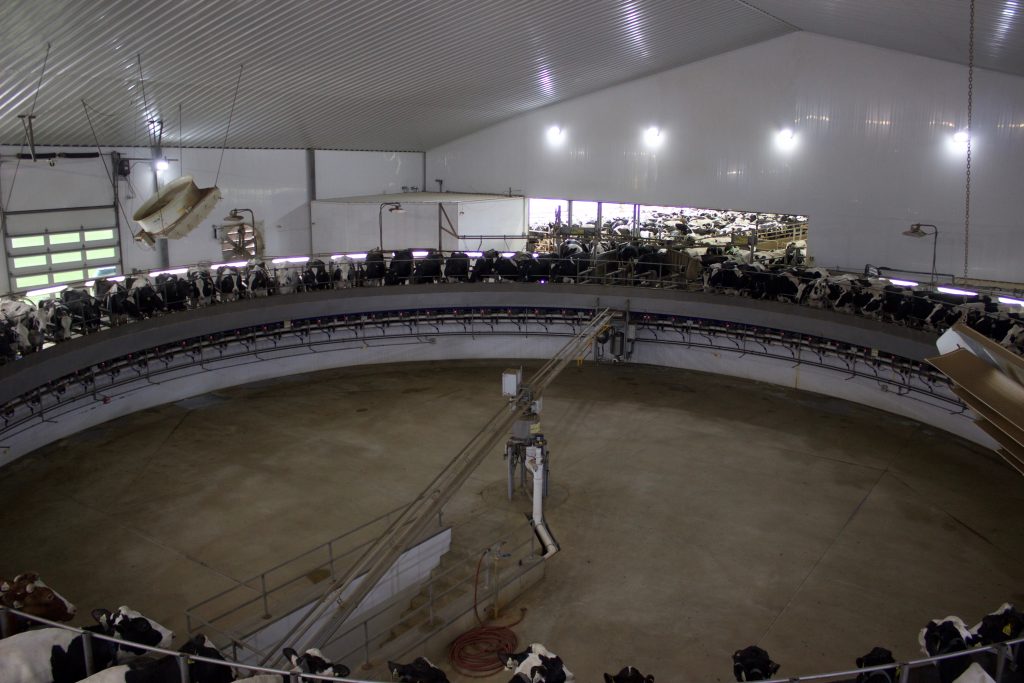
CELINA, Ohio — A few years ago, the VanTilburg family, multi-generation grain farmers, in Celina, Ohio, were looking for ways to get closer to consumers and find stability outside of the ups and downs of grain prices. They were already practicing regenerative agriculture, using cover crops and no-till.
“We’d been riding that roller coaster of highs and lows in the commodity market. We’d been doing regenerative type practices,” said Kyle VanTilburg. “We were seeing the benefits from the crops and soil … but not necessarily the economic benefit.”
They heard about a pledge from Danone to work with farmers using regenerative practices — but they weren’t dairy farmers. Yet. So they started looking at buying a dairy farm. And, while looking, they ran into the McCarty family.
The McCarty family is originally from Pennsylvania, but bought a wheat farm and started milking cows in Kansas about 21 years to expand, so the next generation of farmers could be included.
The family now has four dairies in that part of the country, and started working with Danone in 2011. That’s what brought their work back to this area — Danone has a plant, in Minster, Ohio.
The two families realized they shared similar goals and values and decided to partner on a dairy. MVP Dairy started milking cows in November of 2018. It is permitted for 4,500 cows and is currently milking about 3,800. In addition to its focus on conservation, the dairy invites the public to visit and learn about what it is doing through its learning center.
“Everybody has a pre-conceived notion of what you’re going to see, going to a dairy farm,” said Brock Peters, general manager for MVP Dairy. “But then when you actually get in the doors and start talking to them about this stuff … I think that everybody that probably leaves here, 99% of them, they leave here with a better attitude toward dairy.”
Stability
Just like the commodity markets, dairy goes through cycles. But since MVP Dairy has a solid relationship with Danone, it has some extra stability.
“We’re not hitting home runs, but as long as we’re making singles every day, we’re good with it,” VanTilburg said.
Having that relationship to Danone is a win-win for both sides, he said. Danone and MVP Dairy both avoid the major price swings that come with the typical markets. And not having to focus on the daily markets also allows the dairy to think long-term, focusing heavily on things like environmental impacts and animal welfare.
“The work with regenerative farming, that’s not typically something you see results right away,” said Allison Ryan, director of marking and communications for the dairy. “You’re investing for the future … being able to plan for the future and not worry about having to see those results right away is kind of helpful for doing the right thing.”
Conservation
Everything the farm grows is fed to the cows. The farm tests soil before applying nutrients, uses precision irrigation to reduce runoff and erosion, and uses manure as a fertilizer.
“It’s really kind of a win-win, from the dairy side to the farming operation side, to be able to use those nutrients in the right place at the right time,” VanTilburg said.
The barns are on a 2% slope because the dairy uses a flush system to clean the alleyways about five or six times each day, using all reclaimed water from the cleaning system in the parlor.
MVP Dairy uses a manure management system that separates out dry solids, which can be spread on fields as fertilizer. Some of the water is recycled to flush the barns again, and some goes through a lagoon system so it can eventually be recycled again. The manure management system is similar to ones that several municipalities, including some local to Mercer County, use.

Dairy
The dairy uses a milking carousel. Cows enter on one side, go through a sanitizing step and then have the milker attached. After the milker comes off, the cows go through a post-dip station, then get off the carousel. It takes about eight minutes for one go-round, but the milker is only attached for about four and a half minutes. The dairy can milk about 550 cows in an hour.
MVP Dairy also handles general herd health care, like hoof trimming, as cows leave the milking parlor. This way, cows don’t have their normal routines disturbed often.
Each cow has a radio frequency tag and an activity tracker. There are over 4,000 cows on site, so that technology is important for knowing what it going on with each cow, and making decisions about animal care.
Peters said the carousel is huge for labor efficiency. The cows go to the people, instead of the people walking to each cow. It also helps control the milking routine, since people are stationary and focused on one task at a time.

Learning
As the dairy started milking cows in 2018, it also started building a learning center on-site. That center opened officially in late 2019. It was inspired by and designed around common questions people have about MVP Dairy and the industry as a whole.
“They realized pretty quickly by some of the questions and comments they were receiving that a lot of people just … were a little disconnected from agriculture,” Ryan said.
When the pandemic hit, the center had already had 5,000 visitors and had to cancel another 3,000. It recently started reopening by appointment. A sign on the front of the dairy invites people to come see the cows. The road the dairy sits on, U.S. 33, is a pretty major highway through the area, so a lot of people traveling through the state stop in, Ryan said. They also bring in school groups.
The learning center covers how milk gets from a cow, to products in a grocery store, and includes explanations of how MVP Dairy manages soil, water and manure. It also includes space for visitors to watch cows on the milking carousel.
“Everybody’s got a preconceived idea of what especially big dairy is — ‘it’s a factory farm’ — no, it’s not a factory farm; it’s a large family farm that can actually train our employees to focus on job specific tasks, instead of having to do everything throughout the farm and run around with their hair on fire,” Peters said.
For example, in mid-April, planting season is coming up. But since that’s the VanTilburgs’ focus, Peters can stay focused on the cows.

Verifiers
MVP Dairy works with third-party verifiers on its conservation practices, animal welfare and worker welfare.
“It gives us an extra level of transparency,” Peters said. “Everybody wants to always question, are farms doing what they say they’re doing? Well, this is just a good way for us to come in and help prove that we’re doing it. So, we’re not afraid of third-party audits.”
The audits also give the dairy benchmarks and help it identify areas for improvement. Among other certifications, it became the first Certified B Corp dairy farm in 2020. The B Corp certification covers environmental and social impacts, including looking at the whole supply chain and the other companies the dairy does business with.
“The goal with that certification is to do business with folks that are also doing the right thing,” Ryan said.









